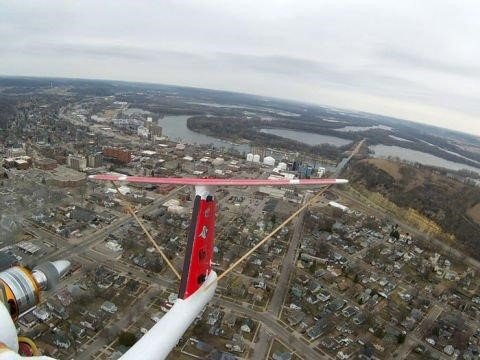UAV Research Group Combats Invasive Species

The UAV research group is helping combat invasive plants and insects. Professor Demoz Gebre-Egziabher spoke at the MN Invasive Terrestrial Plants & Pests Center drone symposium on September 25, the goal of which was to present and educate people on scientific solutions to protect Minnesota’s natural landscapes using Unmanned Aerial Vehicles (UAV’s).
Professor Gebre-Egziabher commonly uses UAV’s as tools for his research in navigational hardware and guidance systems, and to collect data from the air. Presenting ideas at the symposium were Todd Colton, the Chief Aerospace Engineer and co-founder of Sentera, Greg Emerick, the Director or New Strategic Ventures and co-founder of Sentera, and Monika Chandler, a research scientist from the Minnesota Department of Agriculture.
UAV’s have been chosen as an effective method for this issue because they are capable of detecting invasive plant species from the air, which will support human teams on the ground.
Curtis Olson, AEM UAV researcher, said, “In addition to directly detecting invasive plants or insects, current aerial maps and imagery can be useful in documenting infestations and communicating between the team members addressing specific infestation sites. A current and detailed map can help understand how the infestation started and spread, it can help with follow-up in subsequent years, and can assist team members who haven't yet visited the site.”
Invasive plants take over large areas and kill or damage the surrounding wildlife. Three different projects are currently underway to combat different invasive species. One project is looking for the insect species spotted wing drosophila to determine if they are flying at higher altitudes, and to track the insect’s behavior and life cycle. Another project focuses on the invasive vine, Oriental Bittersweet, where the drones look for the berries once all the leaves have fallen off the tree.
Chandler said, “We will not have forests if we have oriental bittersweet infestations.”
Palmer Amaranth is a major concern in Southern North America, and is the focus of the third project. This edible plant can produce up to one million seeds per unit. In some cases, Palmer Amaranth has proven to be herbicide resistant and is capable of destroying entire crops if left untreated.
The drones used for these projects operates with a unique fixed wing system built by the UAV lab rather than the traditional fixed wing system.
“For ultra-high resolution imaging, we have assembled our own fixed wing system in-house based on the X-UAV Talon airframe, combined with our in-house "Goldy3" flight controller, and an off the shelf Sony a6000 camera (+ 30mm prime lens.) We have added a DJI Phantom 4 with a sentera multispectral camera for the palmer amaranth project,” Olson said.
Researchers are hoping that these project will allow them to better understand how invasive species behave and how to contain and eliminate them.